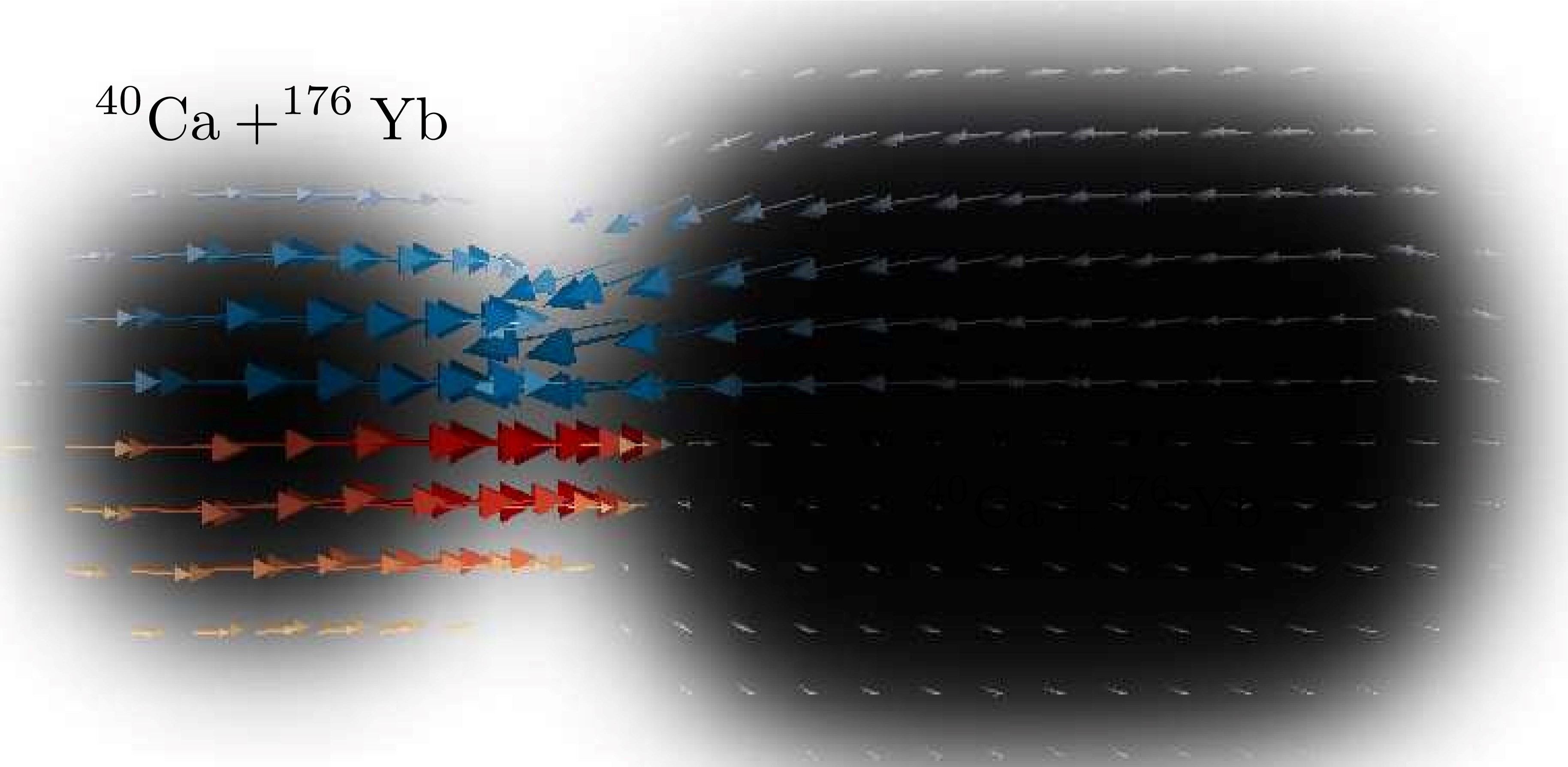Research
Our office sponsors research in many experimental and theoretical fields. We support research groups at many Universities and National Laboratories.
Jump down to nuclear physics research on: Heavy Ions, Medium Energy, Nuclear Structure and Nuclear Astrophysics, Fundamental Symmetries, Theoretical Nuclear Physics, Computational Nuclear Physics, Nuclear Data, Accelerator Physics
Heavy Ions
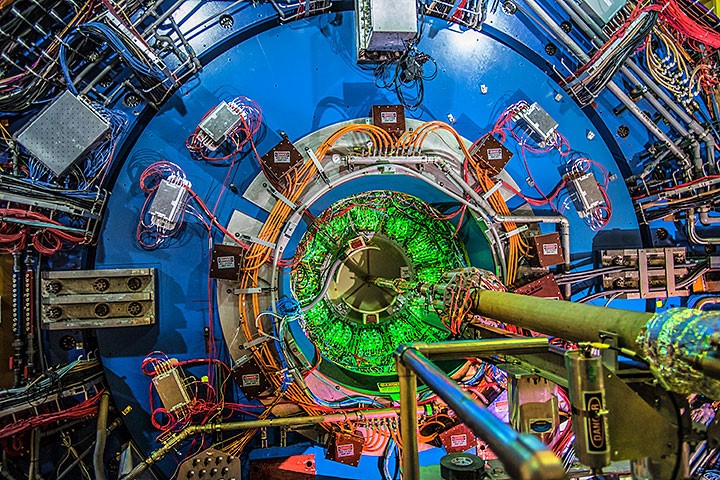
The Heavy Ion subprogram investigates the high temperature frontier of quantum chromodynamics (QCD), by trying to recreate and characterize new and predicted forms of matter and other new phenomena that might occur in extremely hot, dense nuclear matter and which have not existed since the Big Bang. Measurements are carried out primarily using relativistic heavy ion collisions at RHIC, the Relativistic Heavy Ion Collider at Brookhaven National Laboratory (BNL). Participation in the heavy ion program at the Large Hadron Collider (LHC) at the European Organization for Nuclear Research (CERN) provides U.S. researchers the opportunity to search for new states of matter under substantially different initial conditions than those provided by RHIC, yet still provide information regarding the matter that existed during the infant universe. This subprogram also supports advanced detector R&D, instrumentation development as well as scientific research to exploit NP’s next new accelerator facility called the Electron-Ion Collider (EIC) at BNL. The EIC will be a discovery machine for unlocking the secrets of the "glue" that binds the building blocks of visible matter in the universe.
Medium Energy
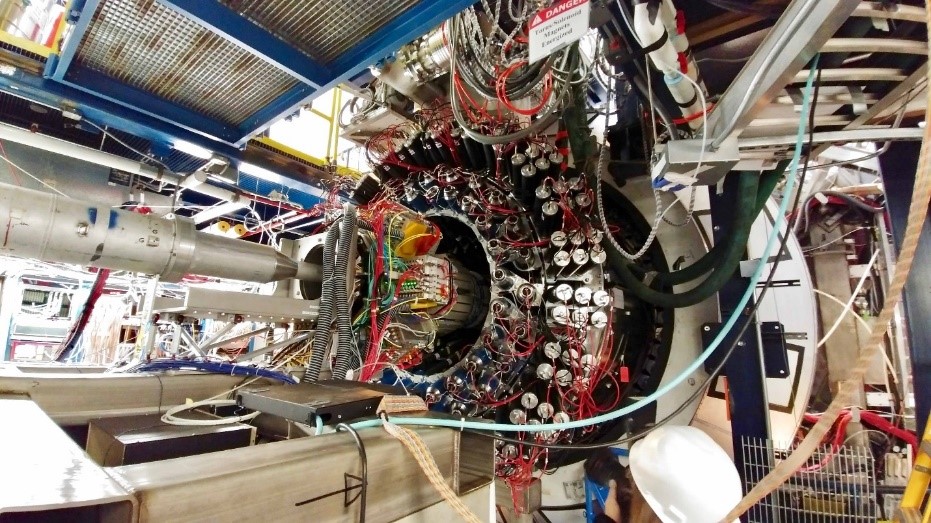
The Medium Energy subprogram primarily explores the low temperature frontier of quantum chromodynamics (QCD) to understand how the properties of existing matter arise from the properties of QCD. This research is conducted at two Nuclear Physics (NP) National User Facilities and other facilities worldwide. The Continuous Electron Beam Accelerator Facility (CEBAF) at the Thomas Jefferson National Accelerator Facility (TJNAF or JLab) provides high quality beams of polarized electrons that allow scientists to extract information on the quarks and gluons that make up protons and neutrons. CEBAF also uses polarized electrons to make precision measurements of processes that can provide information relevant to the intensity frontier to discover the New Standard Model. The Relativistic Heavy Ion Collider (RHIC) at Brookhaven National Laboratory (BNL) provides colliding beams of spin-polarized protons to probe the spin structure of the proton, another important aspect of the QCD frontier. Experiments are also being carried out at Triangle Universities Nuclear Laboratory (TUNL) and Fermi National Accelerator Laboratory (FNAL or Fermilab). This subprogram also supports advanced detector R&D, instrumentation development as well as scientific research to exploit NP’s next new accelerator facility called the Electron-Ion Collider (EIC) at BNL. The EIC will be a discovery machine for unlocking the secrets of the "glue" that binds the building blocks of visible matter in the universe.
Nuclear Structure and Nuclear Astrophysics
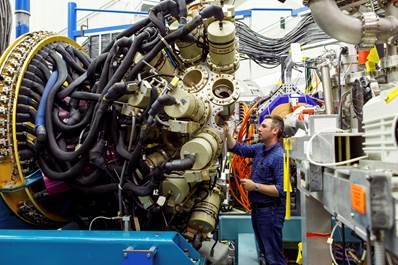
The Nuclear Structure and Nuclear Astrophysics portfolio supports frontiers in the research of proton-rich and neutron-rich nuclei as well as nuclear processes that inform our understanding of stellar nucleosynthesis, neutron stars, and Big Bang nucleosynthesis. Two NP National User Facilities are pivotal in making progress in these frontiers. The Argonne Tandem Linac Accelerator System (ATLAS) at Argonne National Laboratory (ANL) is used to study questions of nuclear structure by providing high-quality beams of all the stable elements up to uranium and selected beams of short-lived nuclei for experimental studies of nuclear properties under extreme conditions and reactions of interest to nuclear astrophysics. The Facility for Rare Isotope Beams (FRIB) will advance the understanding of rare nuclear isotopes and the evolution of the cosmos. The portfolio supports two university “Centers of Excellence,” Triangle Universities Nuclear Laboratory (TUNL) and the Texas A&M University Cyclotron Institute, with unique low-energy accelerator facilities and infrastructure capabilities. The program also partners with other federal agencies to support limited operations of the 88-Inch Cyclotron at the Lawrence Berkeley National Laboratory (LBNL) for a small in-house research program and to meet national security needs.
Fundamental Symmetries
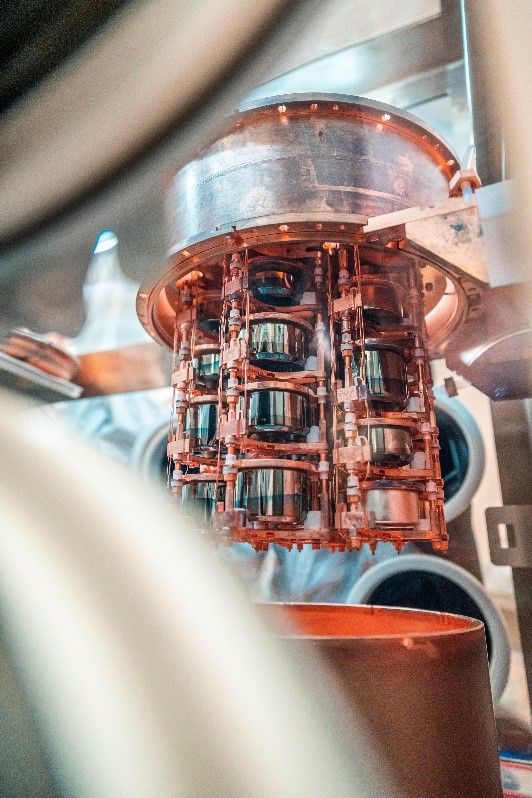
The Fundamental Symmetries (FS) subprogram portfolio supports research to reveal the symmetries and forces governing the history of our universe. Questions addressed through FS experiments include; Why is there more matter than anti-matter? What is the mass of the neutrino and why is it so small? What new forces or particles remain to be discovered. These questions are investigated through experiments relying on cold and ultracold neutrons, trapped atoms and molecules, beta decay and neutrinoless double beta decay. Experiments are currently being carried out or developed in deep underground labs around the world, at neutron facilities, and at three university "Centers of Excellence:” the Center for Experimental Nuclear Physics and Astrophysics (CENPA) at the University of Washington, Triangle Universities Nuclear Laboratory (TUNL) and the Texas A&M Cyclotron Institute (TAMU) with infrastructure capabilities to developed advanced detector systems and to exploit low energy accelerator and research reactor capabilities.
Theoretical Nuclear Physics

The Theoretical Nuclear Physics subprogram provides the theoretical underpinning needed to support the interpretation of a wide range of data obtained from all the other Nuclear Physics (NP) subprograms and to advance new ideas and hypotheses that stimulate experimental investigations. This subprogram supports the Institute for Nuclear Theory (INT) at the University of Washington, where leading nuclear theorists are assembled from across the Nation to focus on key frontier areas in nuclear physics.
Computational Nuclear Physics
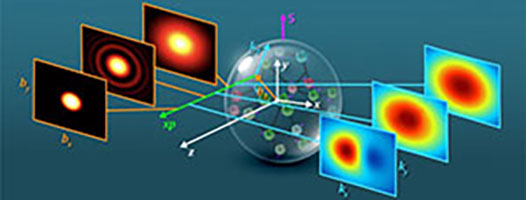
Nuclear Physics Computing subprogram supports research in nuclear physics that rely on large-scale, high-performance computing (HPC). Large-scale computing is essential in extracting new knowledge of nuclear interactions from experiment data and developing quantitative understanding about nuclear matter. The Nuclear Physics Computing program supports the ASCR partnership projects of Scientific Discovery through Advanced Computation (SciDAC) and Nuclear Theory Topical Collaborations (TC) projects. They are five-year multi-institution collaborative projects, involving large-scale computations and are closely aligned with the NP experimental programs. These research projects cover the large-scale simulations of astrophysics objects, nuclear structure and nuclear interactions, fundamental symmetries, quark and gluon structure and dynamics. Nuclear Physics Computing program supports the Lattice QCD program jointly with High Energy Physics (HEP), developing Lattice QCD techniques that are critical to the understanding of nuclei, hadron structure, and the dynamics of strong interactions. Some HPC resources needed for NP research are provided by the National Energy Research Scientific Computing center (NERSC) and through ASCR Leadership Computing Challenge (ALCC) program.
Nuclear Data
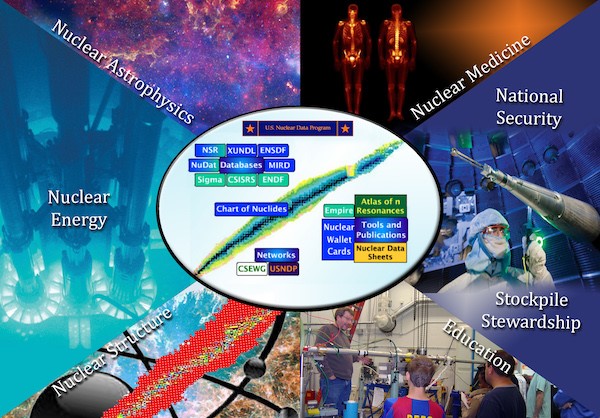
The Nuclear Data subprogram collects, evaluates, and disseminates nuclear data with its support of the U.S. Nuclear Data Program and the National Nuclear Data Center (NNDC). This process combines historical and modern experiments, theory, and modeling to publish best values for nuclear properties such as cross sections and decay data. The extensive nuclear databases produced by this effort are an international resource consisting of carefully organized scientific information gathered over 50 years of low-energy nuclear physics research worldwide. The Nuclear Data subprogram is multi-disciplinary with applications to energy, defense, space, and medicine. Nuclear data underlies modeling and simulation software in nuclear applications so it is key for ensuring results are accurate. Working groups have been established among researchers, as well as federal programs, to help coordinate, prioritize, and fund research efforts to improve nuclear data in basic science and applied nuclear technologies.
Accelerator Physics
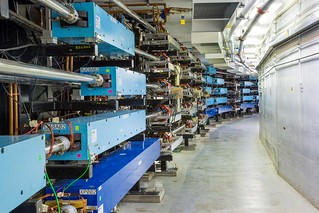
The Accelerator Physics subprogram supports a broad range of activities aimed at research and development related to the science, engineering, and technology for accelerators of electrons, protons and heavy ions. Research and development activities are supported that will advance fundamental accelerator technology and its applications to nuclear physics scientific research. Areas of interest include the basic technologies of the Brookhaven National Laboratory's Relativistic Heavy Ion Collider (RHIC), with heavy ion beam energies up to 100 GeV/amu and polarized proton beam energies up to 250 GeV; technologies associated with RHIC luminosity upgrades; the development of an Electron-Ion Collider (EIC); linear accelerators such as the Continuous Electron Beam Accelerator Facility (CEBAF) at the Thomas Jefferson National Accelerator Facility (TJNAF); and development of devices and methods that would be useful in the generation of intense rare isotope beams for the next-generation rare isotope beam accelerator facility (FRIB). A major focus of the above areas is superconducting radio frequency (RF) acceleration and its related technologies. Also of importance is development of next generation high intensity ion sources and polarized electron sources to realize the full potential of new NP facilities such as FRIB and EIC both under construction. Also of interest is efforts directed at Artificial Intelligence and Machine Learning (AI/ML) for autonomous optimization and control of accelerators and detectors of relevance to current or next generation NP accelerator facilities and scientific instrumentation.

